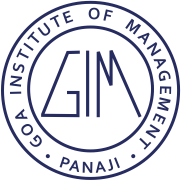Published : Wednesday, 30 July, 2014 01:10 PM
MBA aspirants must be updated with General Awareness on current topics. General awareness topics with analytically drawn conclusions will benefit you in Essay writing / GD & PI. Today, you will read General Awareness Topic: PPP Makes India Third Largest Economy of World !
According to the World Bank, India is third largest economy (USD6,774 billion) of the world after the US and China in terms of purchasing power parity (PPP). But if the countries are ranked in terms of gross domestic product (GDP) compared on the basis of nominal exchange rate, India is ranked 10 (USD1,876 million). The difference between the two approaches exists because the former takes into account the relative costs and the inflation rates of the countries. The nominal exchange rate approach takes into account the market exchange rate determined by the demand and supply of foreign currency.
To illustrate, if a standard burger of McDonald costs USD2.0 in the US, in terms of market determined nominal exchange rate, it should cost INR120 in India if the market exchange rate is 1USD = INR60. But if in reality, similar burger costs INR80 in India, then the exchange rate on the basis of PPP would be 1USD = INR40. In gist, the PPP exchange rate is the rate at which the currency of one country would have to be converted into that of another country to buy the same amount of goods and services in each country.
The price of burger in terms of PPP approach is less than that of market exchange rate approach because cost of production in India is less than that of US due to low labour cost. Additionally, inflation rate is also adjusted from nominal price of burger. Because wages are lower and inflation is high in developing countries, there is a large gap between market and PPP based rates in developing countries while in advanced economies, they tend to be much closer.
However, comparison of exact GDP on the basis of PPP is not possible as comparing the price of each good and service in each country across the world would be nearly impossible. To facilitate price comparisons across countries, the International Comparisons Program (ICP) was established by the United Nations and the University of Pennsylvania in 1968. PPPs generated by the ICP are based on a global survey of prices. For the 2003–06 round, each of the participating countries provided national average prices for 1,000 closely specified products.
PPP approach has several advantages over market based exchange rate. PPP exchange rates are relatively stable over time while market rates are more volatile producing large swings in aggregate measures. Another drawback of market-based rates is that they are relevant only for internationally traded goods. Non-traded goods and services tend to be cheaper in low-income countries. PPP is a better approach because it takes into account non traded goods as well.
However, the biggest drawback of PPP is that it is harder to measure than market-based rate. It is based on the sample of few hundred or thousand commodities. The ICP is a huge statistical undertaking, and new price comparisons are available only at infrequent intervals. In contrast, market exchange rate is always readily available.
However, for macroeconomic comparative analysis, PPP approach is better suited. But market exchange rates are the logical choice when financial flows are involved, for example, the current account balance, which measures the funds coming into and going out of a country represents a flow of financial resources across countries. Thus, which approach is better depends upon its use. As far as national income is considered, PPP approach is better suited to rank the countries.







